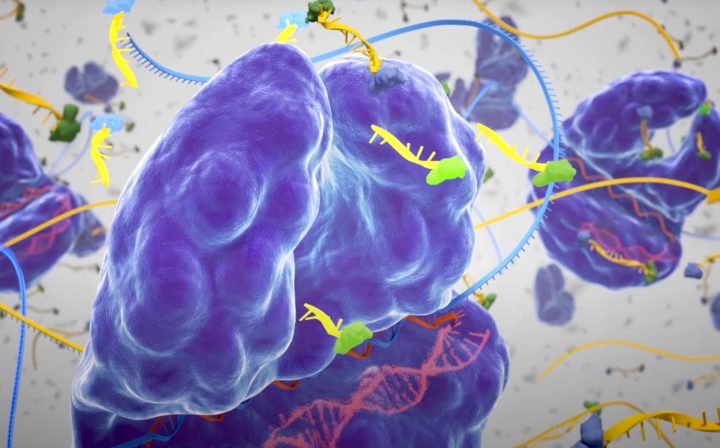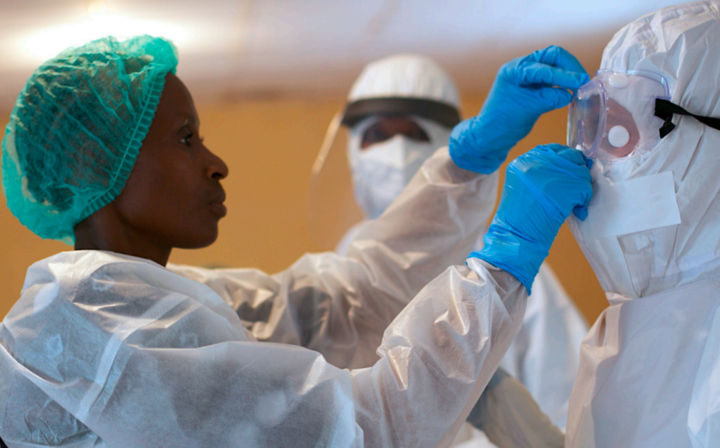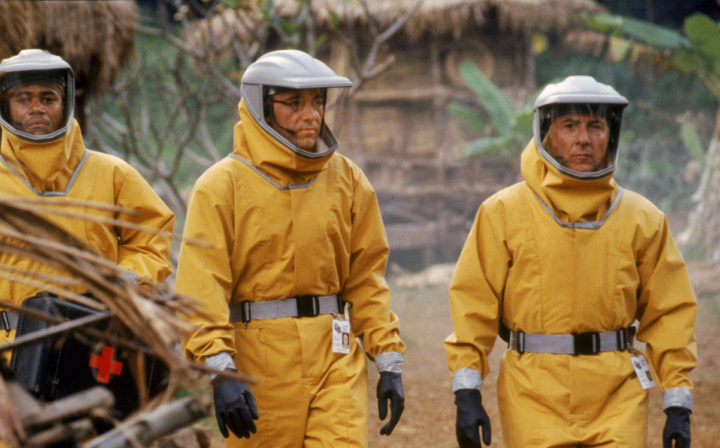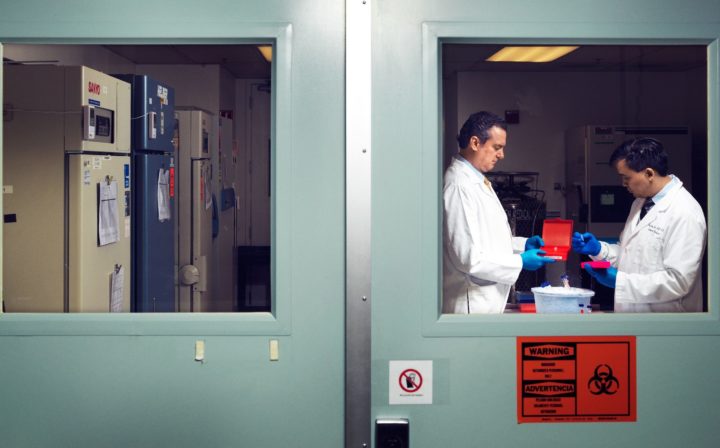Reducing global catastrophic biological risks
Summary
Plagues throughout history suggest the potential for biology to cause global catastrophe. This potential increases in step with the march of biotechnological progress. Global Catastrophic Biological Risks (GCBRs) may compose a significant share of all global catastrophic risk, and, if so, a credible threat to humankind.
Despite extensive existing efforts addressed to nearby fields like biodefense and public health, GCBRs remain a large challenge that is plausibly both neglected and tractable. The existing portfolio of work often overlooks risks of this magnitude, and largely does not focus on the mechanisms by which such disasters are most likely to arise.
Much remains unclear: the contours of the risk landscape, the best avenues for impact, and how people can best contribute. Despite these uncertainties, GCBRs are plausibly one of the most important challenges facing humankind, and work to reduce these risks is highly valuable.
After reading, you may also like to listen to our podcast interview with the author about this article and the COVID-19 pandemic.
This profile replaces our 2016 profile on biosecurity.
Our overall view
Recommended
This is among the most pressing problems to work on.
Scale
We think work to reduce global catastrophic biological risks has the potential for a very large positive impact. GCBRs are both great humanitarian disasters and credible threats to humanity’s long-term future.
Neglectedness
This issue is somewhat neglected. Current spending is in the billions per year, although this large portfolio is not perfectly allocated. Our guesstimated quality adjustment yields ~ $1 billion per year.
Solvability
Making progress on reducing global catastrophic biologial risks seems moderately tractable. Attempts to complement the large pre-existing biosecurity portfolio have fair promise. On the one hand, there seem to be a number of pathways through which risk can be incrementally reduced; on the other, the multifactorial nature of the challenge suggests there will not be easy ‘silver bullets’.
Profile depth
Medium-depth
This is one of many profiles we've written to help people find the most pressing problems they can solve with their careers. Learn more about how we compare different problems, see how we try to score them numerically, and see how this problem compares to the others we've considered so far.
Table of Contents
What is our analysis based on?
I, Gregory Lewis, wrote this profile. I work at the Future of Humanity Institute on GCBRs. It owes a lot to helpful discussions with (and comments from) Christopher Bakerlee, Haydn Belfield, Elizabeth Cameron, Gigi Gronvall, David Manheim, Thomas McCarthy, Michael McClaren, Brenton Mayer, Michael Montague, Cassidy Nelson, Carl Shulman, Andrew Snyder-Beattie, Bridget Williams, Jaime Yassif, and Claire Zabel. Their kind help does not imply they agree with everything I write. All mistakes remain my own.
This profile is in three parts. First, I explain what GCBRs are and why they could be a major global priority. Second, I offer my impressions (such as they are) on the broad contours of the risk landscape, and how these risks are best addressed. Third, I gesture towards the best places to direct one’s career to reduce this danger.
What are global catastrophic biological risks?
Global catastrophic risks (GCRs) are roughly defined as risks that threaten great worldwide damage to human welfare, and place the long-term trajectory of humankind in jeopardy.Bostrom and Cirkovic (2007)</a>:</p> <blockquote><p> [GCRs are a] risk that might have the potential to inflict serious damage to human well-being on a global scale. </p></blockquote> <p><a href=https://80000hours.org/problem-profiles/reducing-global-catastrophic-biological-risks-for-ted-ed/"https://web.archive.org/web/20200306210315/https://www.openphilanthropy.org/focus/global-catastrophic-risks">Open Philanthropy</a>:</p> <blockquote><p> [W]e use the term "global catastrophic risks" to refer to risks that could be globally destabilising enough to permanently worsen humanity's future or lead to human extinction. </p></blockquote> <p><a href=https://80000hours.org/problem-profiles/reducing-global-catastrophic-biological-risks-for-ted-ed/"https://web.archive.org/web/20200306210217/https://www.ncbi.nlm.nih.gov/pmc/articles/PMC5576209/">Schoch-Spana et al. (2017)</a></p> <blockquote><p> The Johns Hopkins Center for Health Security's working definition of global catastrophic biological risks (GCBRs): those events in which biological agents—whether naturally emerging or reemerging, deliberately created and released, or laboratory engineered and escaped—could lead to sudden, extraordinary, widespread disaster beyond the collective capability of national and international governments and the private sector to control. If unchecked, GCBRs would lead to great suffering, loss of life, and sustained damage to national governments, international relationships, economies, societal stability, or global security. </p></blockquote> " rel="footnote" class="footnote-link no-visited-styling" aria-label="Footnote">1 Existential risks are the most extreme members of this class. Global catastrophic biological risks (GCBRs) are a catch-all for any such risk that is broadly biological in nature (e.g. a major pandemic).
The plausibility of GCBRs
The case that biological global catastrophic risks are a credible and urgent threat to humankind arises from a few different sources of evidence. All are equivocal.
- Experts express alarm about biological risks in general, and some weak evidence of expert concern about GCBRs in particular. (Yet other experts are sceptical.)
- Historical evidence of ‘near-GCBR’ events, suggesting a ‘proof of principle’ there could be risks of something even worse. (Yet none have approached extinction-level nor had discernable long-run negative impacts on global civilisation that approached GCBR levels.)
- Worrying features of advancing biotechnology.
- Numerical estimates and extrapolation. (Yet the extrapolation is extremely uncertain and indictable.)
Artificial GCBRs are very dangerous, and increasingly likely
‘Artificial’ GCBRs are a category of increasing concern, owed to advancing biotechnological capacity alongside the increasing risk of its misuse.CRISPR-Cas9 genome editing, <a href=https://80000hours.org/problem-profiles/reducing-global-catastrophic-biological-risks-for-ted-ed/"https://science.sciencemag.org/content/329/5987/52">synthetic bacterial cells, the <a href=https://80000hours.org/problem-profiles/reducing-global-catastrophic-biological-risks-for-ted-ed/"https://web.archive.org/web/20200306211334/https://www.genome.gov/human-genome-project/What">Human Genome Project</a>, etc). Quantitatively, metrics of <a href=https://80000hours.org/problem-profiles/reducing-global-catastrophic-biological-risks-for-ted-ed/"https://web.archive.org/web/20200306211446/https://www.genome.gov/about-genomics/fact-sheets/Sequencing-Human-Genome-cost">sequencing costs</a> or <a href=https://80000hours.org/problem-profiles/reducing-global-catastrophic-biological-risks-for-ted-ed/"https://web.archive.org/web/20200306211608/https://journals.plos.org/plosone/article?id=10.1371%2Fjournal.pone.0034368%22>publications show accelerating trends.</p> " rel="footnote" class="footnote-link no-visited-styling" aria-label="Footnote">2 The current landscape (and plausible forecasts of its future development) have concerning features which, together, make the accidental or deliberate misuse of biotechnology a credible global catastrophic risk.
Replaying the worst outbreaks in history
Polio, the 1918 pandemic influenza strain, and most recently horsepox (a close relative of smallpox) have all been synthesised ‘from scratch’. The genetic sequence of all of these disease-causing organisms (and others besides) are publicly available, and the progress and democratisation of biotechnology may make the capacity to perform similar work more accessible to the reckless or malicious.Ouagrham-Gormley 2014</a>). Biotechnological advances probably have lesser (but non-zero) effect in reducing these challenges.</p> " rel="footnote" class="footnote-link no-visited-styling" aria-label="Footnote">3 Biotechnology therefore poses the risk of rapidly (and repeatedly) recreating the pathogens which led to the worst biological catastrophes observed in history.
Engineered pathogens could be even more dangerous
Beyond repetition, biotechnology allows the possibility of engineering pathogens more dangerous than those that have occurred in natural history. Evolution is infamously myopic, and its optimisation target is reproductive fitness, rather than maximal damage to another species (cf. optimal virulence). Nature may not prove a peerless bioterrorist; dangers that emerge by evolutionary accident could be surpassed by deliberate design.
Hints of this can be seen in the scientific literature. The gain-of-function influenza experiments, suggested that artificial selection could lead to pathogens with properties that enhance their danger.4 There have also been instances of animal analogues of potential pandemic pathogens being genetically modified to reduce existing vaccine efficacy.
These cases used techniques well behind the current cutting edge of biotechnology, and were produced somewhat ‘by accident’ by scientists without malicious intent. The potential for bad actors to intentionally produce new or modified pathogens using modern biotechnology is harrowing.
Ranging further, and reaching higher, than natural history
Natural history constrains how life can evolve. One consequence is the breadth of observed biology is a tiny fraction of the space of possible biology.Drew Endy</a>: "Most of biotechnology has yet to be imagined, let alone made true." Also see <a href=https://80000hours.org/problem-profiles/reducing-global-catastrophic-biological-risks-for-ted-ed/"https://web.archive.org/web/20200306211816/https://www.sciencedirect.com/science/article/abs/pii/S0959440X17301021">Hecht et al. (2018)</a> "Are natural proteins special? Can we do that?"</p> " rel="footnote" class="footnote-link no-visited-styling" aria-label="Footnote">5 Bioengineering may begin to explore this broader space.
One example is enzymes: proteins that catalyse biological reactions. The repertoire of biochemical reactions catalysed by natural enzymes is relatively narrow, and few are optimised for very high performance, due to limited selection pressure or ‘short-sighted evolution’.Anapleurotic reactions</a>, which replenish metabolic intermediaries, where the maximum necessary rate is limited by other enzymes 'up' or 'down' stream, or by flux through the pathway 'capping out' in normal organism function.</p> " rel="footnote" class="footnote-link no-visited-styling" aria-label="Footnote">6 Enzyme engineering is a relatively new field, yet it has already produced enzymes that catalyse novel reactions (1, 2, 3), and modifications of existing enzymes with improved catalytic performance and thermostability (1, 2).
Similar stories can be told for other aspects of biology, and together they suggest the potential for biological capabilities unprecedented in natural history. It would be optimistic to presume that in this space of large and poorly illuminated ‘unknown unknowns’ there will only be familiar dangers.
Numerical estimates
Millett and Snyder-Beattie (2017) offer a number of different models to approximate the chance of a biological extinction risk:
Table 2: Estimates of biological extinction risk 7
| Model | Risk of extinction per century | Method (in sketch) |
|---|---|---|
| Potentially Pandemic Pathogens | 0.00016% to 0.008% | 0.01 to 0.2% yearly risk of global pandemic emerging from accidental release in the US. Multiplied by 4 to approximate worldwide risk. Multiplied by 2 to include possibility of deliberate release 1 in 10000 risk of extinction from a pandemic release. |
| Power law (bioterrorism) | 0.014% | Scale parameter of ~0.5 Risk of 5 billion deaths = (5 billion)-0.5 10% chance of 5 billion deaths leading to extinction |
| Power law (biowarfare) | 0.005% | Scale parameter of ~0.41 Risk of 5 billion deaths = (5 billion)-0.41 A war every 2 years 10% chance of massive death toll being driven by bio 10% chance of extinction |
These rough approximations may underestimate by virtue of the conservative assumptions in the models, that the three scenarios do not mutually exhaust the risk landscape, and that the extrapolation from historical data is not adjusted for trends that (I think, in aggregate) increase the risk. That said, the principal source of uncertainty is the extremely large leap of extrapolation: power-law assumptions guarantee a heavy right tail, yet in this range other factors may drive a different distribution (either in terms of type or scale parameter). The models are (roughly) transcribed into a guesstimate here.8
How to help
General remarks
Tentative career advice
This section offers some tentative suggestions of what to do to contribute to this problem. It is hard to overstate how uncertain and non-resilient these recommendations are: I recommend folks considering a career in this area to heavily supplement this with their own research (and talking to others) before making big decisions.
1. What to study at university
There’s a variety of GCBR-relevant subjects that can be studied, and the backgrounds of people working in this space are highly diverse.9 One challenge is GCBRs interface fuzzily with a number of areas, many of which themselves are interdisciplinary.
It can be roughly divided into two broad categories of technical and policy fields. Most careers require some knowledge of both. Of the two, it is probably better to ‘pick up’ technical knowledge first: this seems generally harder to pick up later-career than most non-technical subjects, and career trajectories of those with a technical background moving towards policy are much more common than the opposite.
Technical fields
Synthetic biology (roughly stipulated as ‘bioengineering that works’) is a key engine of biological capabilities, and so also one that drives risks and opportunities relevant to GCBRs. Synthetic biology is broad and nebulous, but it can be approached from the more mechanistic (e.g. molecular biology), computational (e.g. bioinformatics), or integrative (e.g. systems biology) aspects of biological science.
To ‘become a synthetic biologist’ a typical route is a biological sciences or chemistry undergrad, with an emphasis on one or more of these sub-fields alongside laboratory research experience, followed by graduate training in a relevant lab. iGEM is another valuable opportunity if one’s university participates. Other subfields in biology also provide background and experience relevant commensurate to their proximity to synthetic biology (e.g. biophysics is generally better than histology).
Another approach, particularly relevant for more macrostrategy-type research, are areas of biology with a more abstract bent (e.g. mathematical and theoretical biology, evolutionary biology, ecology). They tend to be populated by a mix of mathematically-inclined biologists and biologically inclined mathematicians (/computer scientists and other ‘math-heavy’ areas).
A further possibility is scientific training in an area whose subject-matter will likely be relevant to specific plausible GCBRs (examples might be virology or microbiology for certain infectious agents, immunology, pharmacology and vaccinology for countermeasures). Although a broad portfolio of individuals with domain-specific scientific expertise would be highly desirable in a mature GCBR ecosystem, its current small size disfavours lots of subspecialisation, especially with the possibility that our understanding of the risk landscape (and thus which specialties are most relevant) may change.
If there are clear new technologies that we will need to develop to mitigate GCBRs, it’s possible that you could also have a significant impact as a generalist engineer or tech entrepreneur. This could mean that general training in quantitative subjects, in particular engineering, would be helpful.
Policy fields
Unlike technical fields, policy fields are accessible to those with backgrounds in the humanities or social sciences as well as ‘harder’ science subjects.10 They therefore tend to be better approaches for those who have already completed an undergraduate degree in the humanities or social sciences looking to move into this area than technical fields (but people with technical backgrounds are often highly desired for government jobs).
The most relevant policy subjects go under the labels of ‘health security’, ‘biosecurity’, or ‘biodefense’.11 The principal emphasis of these areas is the protection of people and the environment from biological threats, so giving it the greatest ‘GCBR relevance’. Focused programmes exist, such as George Mason University’s Biodefense programmes (MS, PhD). Academic centres in this area, even if they do not teach, may take research interns or PhD students in related disciplines (e.g. Johns Hopkins Centre for Health Security, Georgetown Centre for Global Science and Security). The ELBI fellowship and SynbioLEAP are also good opportunities (albeit generally for mid or later-career people) to get further involved in this arena.
This area is often approached in the context of other (inter-)disciplines. Security studies/IR ‘covers’ aspects of biodefense, with (chemical and) biological weapon non-proliferation the centre of their overlap. Science and technology studies (STS), with its interest in socially responsible science governance, has some common ground with biosecurity (dual use research of concern is perhaps the centre of this shared territory). Public health is arguably a superset of health security (sometimes called health protection), and epidemiology a closely related practice. Public policy is another relevant superset, although fairly far-removed in virtue of its generality.
1. ‘Explicit’ work on GCBRs
There are only a few centres which work on GCBRs explicitly. To my knowledge, these are the main ones:
- The Centre for Health Security (CHS)
- The Nuclear Threat Initiative (NTI)
- The Future of Humanity Institute (FHI)
- Centre for the Study of Existential Risk (CSER)
As above, this does not mean these are the only places which contribute to reducing GCBRs: a lot of efforts by other stakeholders, even if not labelled as (or primarily directed towards) GCBR reduction nonetheless do so.
It is both hoped and expected that the field of ‘explicit’ GCBR-reduction work will grow dramatically over the next few years, and at maturity be capable of absorbing dozens of suitable people. At the present time, however, prospects for direct work are somewhat limited: forthcoming positions are likely to be rare and highly competitive – the same applies to internships and similar ‘limited term’ roles. More contingent roles (e.g. contracting work, self-contained projects) may be possible at some of these, but this work has features many will find unattractive (e.g. uncertainty, remote work, no clear career progression, little career capital).
2. Implicit approaches
Implicit approaches involve working at a major stakeholder in a nearby space, in the hopes of enhancing their efforts towards GCBR reduction and cultivating relevant career capital. I sketch these below, in highly approximate order of importance:
United States Government
The US government represents one of the largest accessible stakeholders in fields proximate to GCBRs. Positions are competitive, and many roles in a government career are unlikely to be solely focused on matters directly relevant to GCBRs. Individuals taking this path should not consider themselves siloed to a particular agency: career capital is transferable between agencies (and experience in multiple agencies is often desirable). Work with certain government contractors is one route to a position at some of these government agencies.
Relevant agencies include:
- Department of Defence (DoD)
- Defence Advanced Research Projects Agency (DARPA)
- Defence Threat Reduction Agency (DTRA)
- Office of the Secretary of Defence
- Offices that focus on oversight and implementation of the Cooperative Threat Reduction Program (Counter WMD Policy & Nuclear, Chem Bio Defense)
- Office of Net Assessment, (including Health Affairs)
- State Department
- Bureau of International Security and Nonproliferation
- Biosecurity Engagement Program (BEP)
- Department of Health and Human Services (HHS)
- Centers for Disease Control and Prevention (CDC)
- Office of the Assistant Secretary for Preparedness and Response (ASPR)
- Biomedical Advanced Project and Development Agency (BARDA)
- Office of Global Affairs
- Department of Homeland Security
- Federal Bureau of Investigation, Weapons of Mass Destruction Directorate
- U.S. Agency for International Development, Bureau of Global Health, Global Health Security and Development Unit
- The US intelligence community (broadly)
- Intelligence Advanced Research Projects Agency (IARPA)
Post-graduate qualifications (PhD, MD, MA, or engineering degrees) are often required. Good steps to move into these careers are the Presidential Management Fellowship, the AAAS Science and Technology Policy Fellowship, Mirzayan Fellowship, and the Epidemic Intelligence Service fellowship (for Public Health/Epidemiology).
Scientific community (esp. synthetic biology community)
It would be desirable for those with positions of prominence in academic scientific research or leading biotech start-ups, particularly in synthetic biology, to take the risk of GCBRs seriously. Professional experience in this area also lends legitimacy when interacting with these communities. SynbioLEAP is one useful programme to be aware of. A further dividend is this area is a natural fit for those wanting to work directly on technical contributions and counter-measures.Biomedical research</a></p> " rel="footnote" class="footnote-link no-visited-styling" aria-label="Footnote">12
International organisations
The three leading candidates are the UN Office for Disarmament Affairs (UNODA), the World Health Organisation (WHO), and the World Organization for Animal Health (OIE).
WHO positions tend to be entered into by those who spent their career at another relevant organisation. For more junior roles across the UN system, there is a programme for early-career professionals called The Junior Professional Officers (JPO) programme. Both sorts of positions are extraordinarily competitive. A further challenge is the limited number of positions orientated towards GCBRs specifically: as mentioned before, the biological weapons implementation and support unit (ISU) comprises three people.
Academia/Civil society
There are a relatively small number of academic centres working on related areas, as well as a similarly small diaspora of academics working independently on similar topics (some listed above). Additional work in these areas would be desirable.Academic research</a></p> " rel="footnote" class="footnote-link no-visited-styling" aria-label="Footnote">13
Relevant civil society groups are thin on the ground, but Chatham House (International Security Department), and the National Academies of Sciences, Engineering, and Medicine (NASEM) are two examples.
(See also this guide on careers in think tanks).
Other nation states
Parallel roles to those mentioned for the United States in security, intelligence, and science governance in other nation states likely have high value (albeit probably less so than either the US or international organisations). My understanding of these is limited (some pointers on China are provided here).
Public Health/Medicine
Public health and medicine are natural avenues from the perspective of disease control and prevention, as well as the treatment of infectious disease, and medical and public health backgrounds are common in senior decision makers in relevant fields. That said, training in these areas is time-inefficient, and seniority in these fields may not be the most valuable career capital to have compared to those above (cf. medical careers).
Other things
Relevant knowledge
GCBRs are likely a cross-disciplinary problem, and although it is futile to attempt to become an ‘expert at everything’, basic knowledge of relevant fields outside one’s area of expertise is key. In practical terms, this recommends those approaching GCBRs from a policy angle acquaint themselves with the relevant basic science (particularly molecular and cell biology), and those with a technical background the policy and governance background.
Exercise care with original research
Although reading around the subject is worthwhile, independent original research on GCBRs should be done with care. The GCBR risk landscape has a high prevalence of potentially hazardous information, and in some cases the best approach will be prophylaxis: to avoid certain research directions which are likely to uncover these hazards. Some areas look more robustly positive, typically due to their defense-bias: better attribution techniques, technical and policy work to accelerate countermeasure development and deployment, and more effective biosurveillance would be examples of this. In contrast, ‘Red teaming’ or exploring what are the most dangerous genetic modifications that could be made to a given pathogen are two leading examples of research plausibly better not done at all, and certainly better not done publicly.
Decisions here are complicated, and likely to be better made by the consensus in the GCBR community, rather than amateurs working outside of it. Unleashing lots of brainpower on poorly-directed exploration of the risk landscape may do more harm than good. A list of self-contained projects and research topics suitable for ‘external’ researchers is in development: those interested are encouraged to get in touch.
Want to work on reducing global catastrophic biorisks? We want to help.
We’ve helped dozens of people formulate their plans, and put them in touch with academic mentors. If you want to work on this area, apply for our free one-on-one advising service.
Find opportunities on our job board
Our job board features opportunities in biosecurity and pandemic preparedness:
Learn more
- All 80,000 Hours’ content on reducing risks of catastrophic pandemics
- Greg’s ultra-rough reading list.
- Chris Bakerlee’s reading list.
- Good online sources to keep abreast of developments in the broad field (from a primarily US perspective) are the GMU Pandora report and the CHS Health Security Headlines mailing list.
- The Precipice: Existential Risk and the Future of Humanity by Toby Ord — see Chapters 3 and 5
- Discussion of how GCBRs should be defined from the Centre for Health Security
- You can find a discussion of GCBRs in chapters 14 and 20 of Global Catastrophic Risks edited by Bostrom and Cirkovic (2007)
- Think about applying to work with one of the experts on this list.
Podcast interviews about GCBRs
Other relevant 80,000 Hours articles
- Why despite global progress, humanity is probably facing its most dangerous time ever
- Introducing the long-term value thesis
Notes and references
- Different attempts at a definition of GC(B)Rs point in the same general direction:
[GCRs are a] risk that might have the potential to inflict serious damage to human well-being on a global scale.
[W]e use the term “global catastrophic risks” to refer to risks that could be globally destabilising enough to permanently worsen humanity’s future or lead to human extinction.
The Johns Hopkins Center for Health Security’s working definition of global catastrophic biological risks (GCBRs): those events in which biological agents—whether naturally emerging or reemerging, deliberately created and released, or laboratory engineered and escaped—could lead to sudden, extraordinary, widespread disaster beyond the collective capability of national and international governments and the private sector to control. If unchecked, GCBRs would lead to great suffering, loss of life, and sustained damage to national governments, international relationships, economies, societal stability, or global security.↩
- One can motivate this by a mix of qualitative and quantitative metrics. On the former, one can talk of recent big biotechnological breakthroughs (CRISPR-Cas9 genome editing, synthetic bacterial cells, the Human Genome Project, etc). Quantitatively, metrics of sequencing costs or publications show accelerating trends.↩
- Although there’s wide agreement on the direction of this effect, the magnitude is less clear. There (thankfully) remain formidable operational challenges beyond the ‘in principle’ science to perform a biological weapon attack, and historically many state and non-state biological weapon programmes stumbled at these hurdles (Ouagrham-Gormley 2014). Biotechnological advances probably have lesser (but non-zero) effect in reducing these challenges.↩
- The interpretation of these gain of function experiments is complicated by the fact that the resulting strains, although derived from highly pathogenic avian influenza and could be transmitted between mammals, also suggested said strains had relatively ineffective mammalian transmission and lower pathogenicity.↩
- Drew Endy: “Most of biotechnology has yet to be imagined, let alone made true.” Also see Hecht et al. (2018) “Are natural proteins special? Can we do that?”↩
- Often selection pressure will ensure ‘good enough’ performance, but with little incremental pressure between ‘good enough’ and catalytic perfection. Perhaps a common example is Anapleurotic reactions, which replenish metabolic intermediaries, where the maximum necessary rate is limited by other enzymes ‘up’ or ‘down’ stream, or by flux through the pathway ‘capping out’ in normal organism function.↩
- These are essentially a hundred times larger than the quoted annual risks: the correction factor for conditional events of Century risk = 1 – (1 – Annual Risk)^100 at these small values of annual risk only affects the 5th significant digit.↩
- It is worth noting this transcription is very rough, and the judgements around appropriate credence intervals and distributions used are far from unimpeachable. Readers are welcome to duplicate the model and adjust parameters as they see fit.
Another feature (cf. above), is that the introduction of uncertainty around the point estimates into the model increases the point estimate of the total risk: probability mass in the ‘upper tail’ of uncertainty for each parameter increases mean risk more than symmetric amounts in the lower tail reduce it.↩
- Taking the example of FHI, the academic backgrounds of its three-person ‘bioteam’ are International relations, mathematics, and medicine/public health.↩
- E.g. The undergraduate degrees of researchers at the Johns Hopkins Center for Health Security and the Biodefense faculty at George Mason include: biology, neuroscience, anthropology, engineering, industrial management, political science, art history, and english literature.↩
- The shades of meaning between health security, to biosecurity, to biodefense, although porous, usually connote progressively tighter focus. Health security ‘covers’ anything which can threaten public health, including the not-directly-biological (e.g. humanitarian crises). Biosecurity emphasises the subset of ‘directly biological’ threats, including those that are accidental or naturally occurring (e.g. laboratory accidents, zoonotic diseases). Biodefense tends to emphasise the subset of adversarial risks of deliberate misuse (e.g. bioterrorism, biological warfare). (Biosafety is the converse, which emphasises accidental risks.)↩
- Related career profile: Biomedical research↩
- Related career profile: Academic research↩






